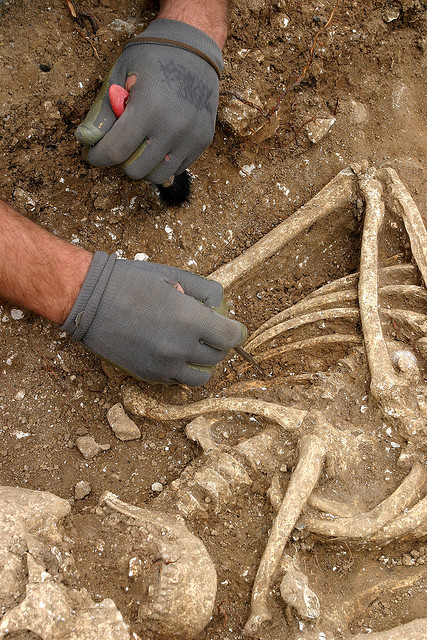READ: Forensic Anthropology
Determining Age
Forensic Anthropology
Forensic anthropology is the use of human remains to determine information about an individual and their time, manner, and cause of death. Forensic anthropology is typically used when the body has decomposed to the point that it is skeletonized. Bones can last a very long time depending on the conditions they are in, but they can provide information about a person long after they have died.

Age
Bones can be used to determine the age of a person with varying degrees of accuracy. It is much easier to estimate the age of the skeletons of infants or children. Bones in infants and children can be measured and compared against known growth standards. Usually the long bones are measured. The long bones include the femur, tibia, and fibula in the legs, and the humerus, radius, and ulna in the arms.
It is also possible to look at the epiphyseal fusion in the bones of children and infants. Epiphyseal plates, sometimes called growth plates, are areas at the end of the long bones that are open during infancy and childhood, but will fuse together as the child grows. The fusion of growth plates begins and ends at different times for different bones, but fusion is generally happening in some of the bones between the ages of 10 - 30 years old.
Because of the presence of epiphyseal plates, estimations of the age of skeletons are fairly accurate for a person under age 25. For people ages 25-45 it is extremely difficult to estimate age based on the skeleton. After about age 45 anthropologists can study the bones for evidence of age such as wear on joints, or arthritis. For people age 45 or older it is possible to get a slightly more accurate estimation of age because of the wear on the bones.
Another way that age can be determined in young children is the teeth. The skull can be examined for the development of adult teeth. This can help give a relative estimation of the child’s age.